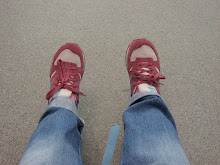
“We never asked, on hearing about the latest arrest, ‘What he was arrested for?’ but we were exceptional. Most people, crazed be fear, asked this question just to give themselves a little hope; if others were arrested for some reason, then they wouldn’t be arrested, because they hadn’t done anything wrong. They vied each other in thinking up ingenious reasons to justify each arrest: ‘Well, she really is a smuggler, you know,’ ‘He really did go rather far’, or ‘It was only to be expected, he’s a terrible man,’ I always thought there was something fishy about him,’ ‘He isn’t one of us at all…’
This is why we had outlawed the question ‘What was he arrested for?’
‘What for?’ Akhamatova would cry indignantly whenever, infected by the prevailing climate, anyone in our circle asked this question.
‘What do you mean what for? It’s time you understood that people are arrested for nothing!’
- Nadezhda Mandelstahm, Hope against Hope
This is why we had outlawed the question ‘What was he arrested for?’
‘What for?’ Akhamatova would cry indignantly whenever, infected by the prevailing climate, anyone in our circle asked this question.
‘What do you mean what for? It’s time you understood that people are arrested for nothing!’
- Nadezhda Mandelstahm, Hope against Hope

But it was not even necessary to be extraordinary. Lyudmila Khachatryan was arrested for marrying a foreigner, a Yugoslav soldier. Lev Razgon recounted the story of a peasant, Seryogin, who, on being told that someone had killed Kirov, replied ‘I’m damned if I care.’ Seryogin had never heard of Kirov, and assumed he was someone who had died in a fight with the neighbouring village. For that mistake, he received a ten year sentence. By 1939, telling a joke, or hearing one, about Stalin; being late for work; having the misfortune to be named by a terrified friend or a jealous neighbour as a ‘co-conspirator’ in a non-existing plot; owning four cows in a village where most people only own one; stealing a pair of shoes; being a cousin of Stalin’s wife; stealing a pen and some paper from one’s office in order to give them to a schoolchild who had none; all of these could, under the right circumstances, lead to a sentence in a soviet concentration camp.”
in “Gulag – A History” de Anne Appelbaum
Nota da escriba: As fotos são do Monumento aos Caídos no Leste, que está situado em Varsóvia, Polónia.
Os nomes que constam dos carris são de gulags, campos de concentração soviéticos, local onde se pensa que tenham morrido mais pessoas que nos KZ nazis.

4 comentários:
Estes monumentos são sempre impressionantes...
Este então está particularmente bem pensado, com os carris com o nome dos Gulags, referente aos comboios de transporte.
Mas estes parecem estar mais esquecidos na história, sempre gostava de saber porquê. Não será por uma questão de nº de vítimas, certamente...
A autora deste livro aventa uma hipótese interessante, Noiva.
Ela diz que estes "pecadilhos" foram menos falados porque os Aliados não quiseram admitir ter feito um pacto com o diabo (vulgo Zé dos Bigodes).
Enviar um comentário